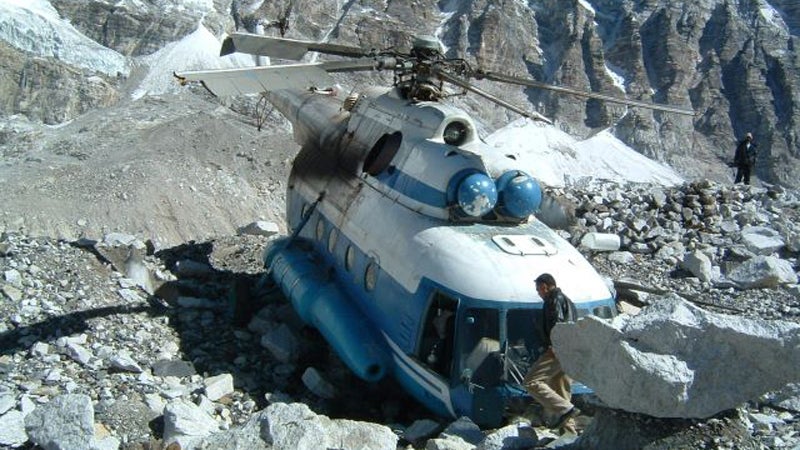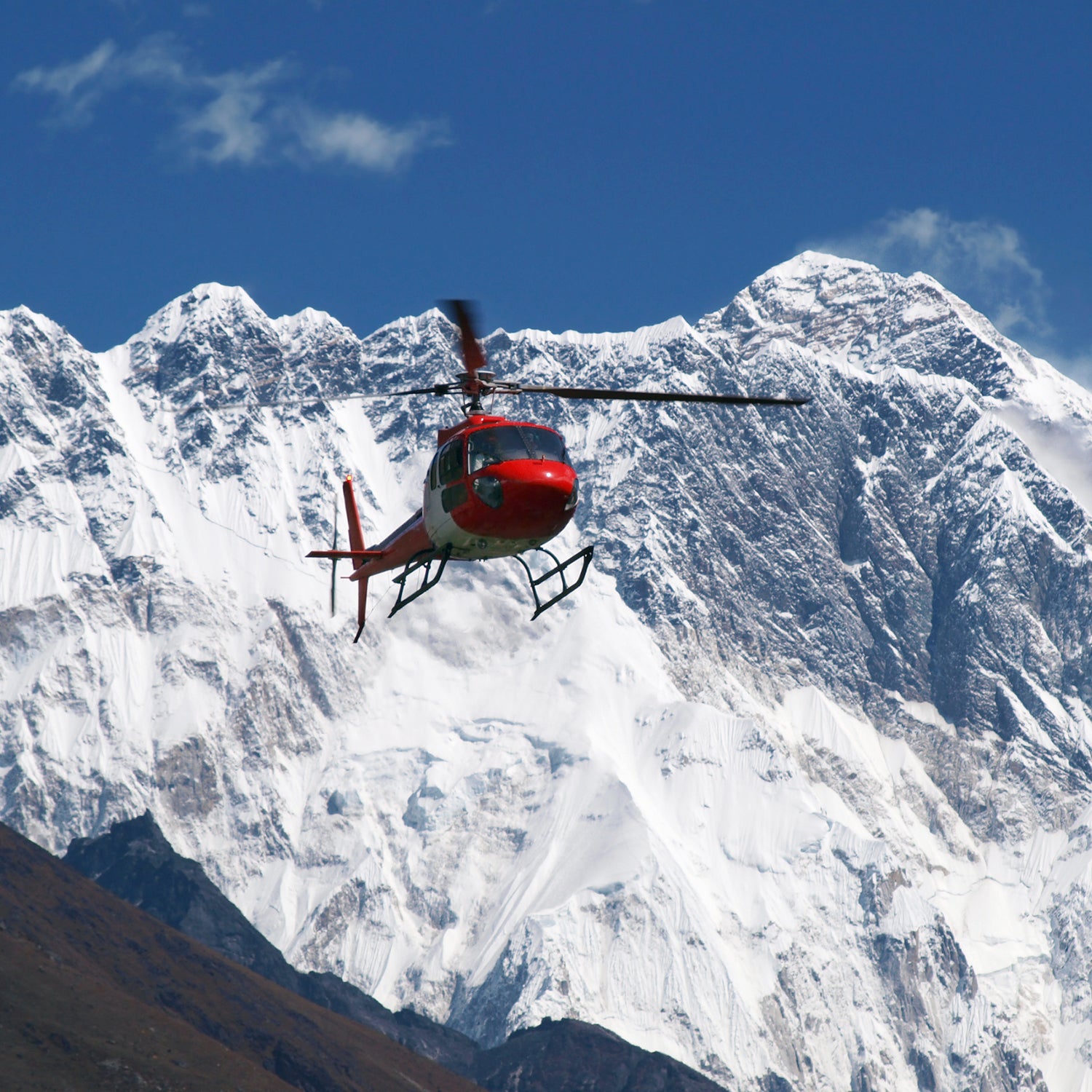When Jing Wang and her team last year, becoming the only party to do so in a season marked by tragedy, the 41-year-old Chinese climber reignited a longstanding debate about the purity of climbing. To avoid the Khumba Icefall, she chartered a helicopter to fly her from Base Camp to Camp II, bypassing one of Everest’s most dangerous obstacles and more than 50 years of climbing tradition.
Helicopters have long been a contentious addition to the mountain. But Wang’s flight—on a year when 16 high-altitude workers died in one day, effectively closing the mountain—became a lightning rod for criticism.
The Nepalese government . Had her flight been authorized? Officials disagree, even today. Was her summit legitimate? Everest summiter and blogger says no: “Using a helicopter to climb a mountain isn’t really climbing a mountain.” Was Wang’s climb even official? Not exactly. Her achievement is officially noted as “disputed” in the Himalaya Database, an asterisk that has been applied to dubious summits.
The chopper debate isn’t going away in 2015. Whether shuttling climbers from Base Camp to Kathmandu or pulling off rescue operations at the higher camps, the roar of helicopter engines around Everest will be a constant.
Some guides dispute the safety argument, citing the poor track record of heli flights on the mountain—there have been 43 crashes and at least 338 deaths, according to a 2009 report.
Helicopters have been flying on Everest since 1992. They’re sometimes used to shuttle gear to Base Camp and as a shortcut for climbers to get back to Kathmandu. But people are rarely flown to Base Camp and the idea of using helicopters as shuttles up the mountain was unheard of, until Wang. They’re also technically forbidden above Base Camp except in emergency rescue situations. (Though rescue flights have become standard practice, they cost upwards of $10,000 if the injured climber is above 20,000 feet.)
That may be about to change. In the wake of the 2014 avalanche, Western outfitters like Washington-based (IMG) and New Zealand-based argue that flying supplies over the Icefall is the best way to keep Sherpas and clients safe. It’s simple math, says Greg Vernovage, 2015 expedition leader for IMG: If it takes ten hours for a Sherpa to make a single up-and-down Icefall trip, and a Sherpa team consists of 70 individuals, that’s 700 man-hours. “If we’re looking to minimize risk, 700 hours seems like a pretty good place to start,” Vernovage says.
Some guides, like 15-time summiter Dave Hahn, dispute the safety argument, citing the poor track record of heli flights on the mountain—there have been 43 crashes and at least 338 deaths, according to a 2009 report. Others note that a mass-adoption of helicopters may reduce Sherpa wages.

Sherpas are paid well by local standards to carry gear through the Icefall, says Jiban Ghimire, managing director of Kathmandu-based . (Western outfitters pay around $4,000 a year to Sherpas who work above Base Camp—not including a bonus of roughly $350 for their trips through the Icefall.) Nepalese outfitters would rather officials focus on constructing and maintaining a safer Icefall route than flying over it. Helicopters are really only practical for expeditions with the richest of clients. Smaller outfitters wouldn’t be able to compete. Flying gear over the Icefall would cost an additional $34,800 per 12 clients, according to calculations ���ϳԹ��� made after talking to flight operators and several outfitters. That’s a prohibitive expense for all but the most well-financed outfitters.
For gear flights to take place, the Ministry of Culture, Tourism, and Civil Aviation will need to revise its rules. On March 17, the government issued a statement saying that it intends to improve the response time of helicopters in rescue situations, but the ministry has remained silent on whether it will allow helicopters to shuttle either gear or climbers. And given the government’s typical response time, that’s unlikely to change anytime soon.


